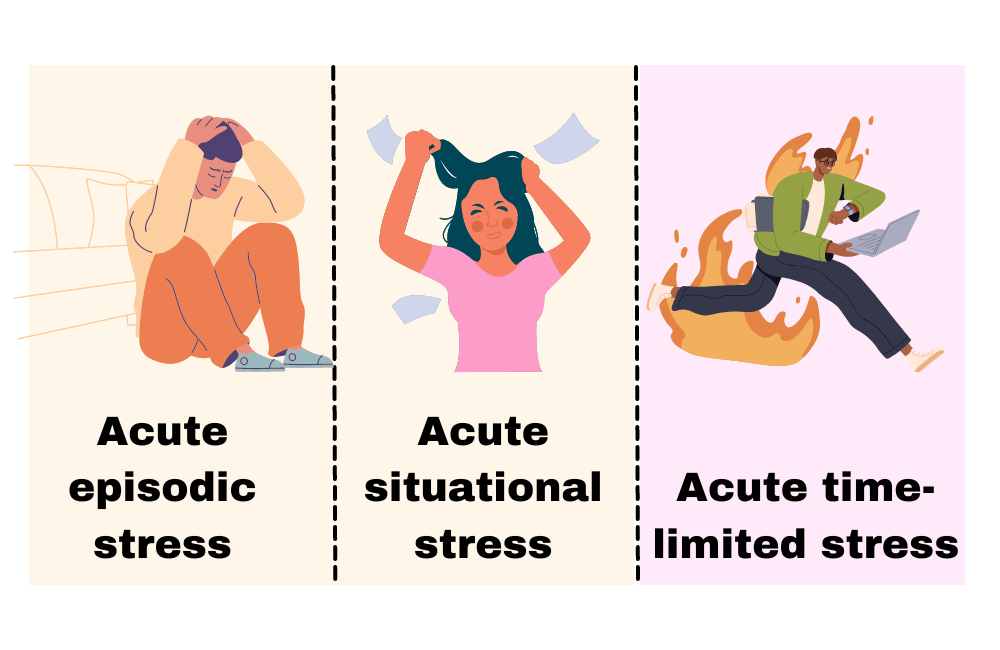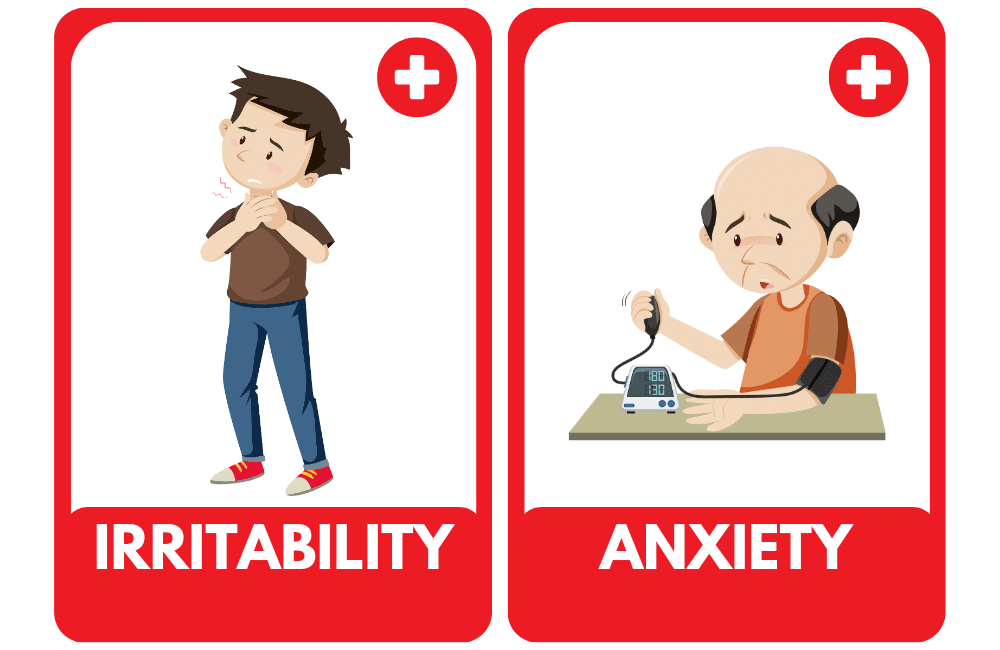Are you overwhelmed by an unexpected challenge, a sudden project at work, or a personal incident? You might be experiencing a natural human response called acute stress. Considered the most common form of stress, acute stress is a topic that requires more attention due to its significant impact on the lives of individuals worldwide.

According to statistics, approximately 70% of adults in the United States admit they feel stress or anxiety daily, with a significant portion of these cases being acute stress (American Institute of Stress, 2021). This percentage equates to many people dealing with this often-underestimated psychological condition.
The Nature and Function of Acute Stress
Acute stress is a biological response triggered when an individual perceives a threat or challenge, whether real or imagined. It’s your body’s immediate reaction to a new, challenging, or potentially dangerous situation. This reaction is often called the “fight or flight” response, coined by American physiologist Walter Cannon in the early 20th century.
When an individual encounters a stressor, the body undergoes several physiological changes to enhance its ability to deal with the perceived threat. These changes include increased heart rate, rapid breathing, and a temporary boost in energy due to the release of adrenaline and cortisol – often termed “stress hormones.”
The function of acute stress is fundamentally protective. It provides a burst of energy and heightened alertness to respond to immediate threats or challenges effectively. This response allowed our ancestors to flee from predators or face natural disasters. In our modern lives, acute stress can motivate us to meet deadlines, perform well in presentations, or react quickly to prevent accidents.
The Types of Acute Stress
Acute stress, depending on its cause, is categorized into three primary types:

- Acute episodic stress: This is experienced when individuals frequently encounter situations or take on responsibilities that lead to stress. Those who habitually take on more than they can handle or often find themselves in conflict tend to fall into this category.
- Acute time-limited stress: This type is characterized by anxiety or discomfort in the face of a specific task or event. Examples might include a job interview, public speaking, or sitting an exam.
- Acute situational stress arises from traumatic events such as accidents, losing a loved one, or significant life changes.
The Potential Problems of Acute Stress
While acute stress plays a critical role in our survival and can fuel our motivation, when it becomes frequent or chronic, it poses potential problems. If the body is repeatedly exposed to stressors, it doesn’t have time to recover, leading to constant alertness that can impact physical and mental health.

Repeated episodes of acute stress can lead to symptoms such as irritability, anxiety, depression, headaches, and insomnia. Over time, chronic exposure to stress hormones can contribute to severe health conditions like heart disease, high blood pressure, diabetes, and other mental health disorders. A study by the American Psychological Association in 2020 showed that prolonged exposure to stress could result in long-term changes to the brain’s structure and function.
Feeling overwhelmed with stress? Dive into this guide to discover effective methods for reducing stress and anxiety.
Techniques to Manage Acute Stress
Recognizing acute stress is the first step in managing it. Once identified, various techniques can help manage and alleviate stress symptoms:
Mindfulness and Meditation: These practices can help ground you in the present moment and reduce anxiety. Techniques like focused breathing, body scan meditation, or guided imagery can be helpful.
Physical Activity: Exercise is a fantastic stress-buster. It helps boost mood by stimulating the production of endorphins, known as ‘feel-good’ hormones while providing a healthy distraction from stressful situations.
Healthy Eating and Sleeping Habits: Stress can sometimes lead to unhealthy eating or sleeping patterns. Aim to maintain a balanced diet and get enough sleep, as these factors contribute to your overall well-being and resilience to stress.
Time Management: One of the leading causes of acute stress is feeling overwhelmed by the amount of work or responsibilities one has. Effective time management techniques can assist in planning, prioritizing, and organizing tasks more efficiently.
Professional Help: If acute stress becomes too much to handle, seeking professional help is recommended. Therapists and counselors can provide strategies and tools to manage stress effectively.
Acute Stress in the Modern Age
Given our fast-paced lifestyles in the 21st century, it’s no surprise that acute stress is a common experience. While this response has served us well throughout human evolution, modern stressors tend to be more psychological than physical, making it vital for us to manage our stress responses effectively.
Understanding and addressing acute stress becomes crucial as we become more aware of mental health. Its impact can’t be underestimated, as it permeates various aspects of our lives – work, relationships, health, and overall well-being.
Acute stress isn’t something to be feared or avoided. Instead, with the right understanding and management, it can be a tool that helps us perform better and grow stronger. The key lies in striking the right balance and understanding that while stress is a part of life, it doesn’t have to control it. By developing coping mechanisms and self-care habits, we can harness acute stress to our advantage, turning life’s challenges into opportunities for growth.
So, the next time you’re faced with a stressful situation, remember – acute stress is a natural response. With the right tools and mindset, you can navigate it successfully, ensuring it becomes a stepping stone rather than a stumbling block on your path to success.
Wrapping Up
In the face of life’s challenges, acute stress is a natural, biological response. It equips us with the means to protect ourselves and succeed in demanding situations. However, repeated acute stress can lead to serious health complications if not managed effectively.
In the end, maintaining a balanced relationship with stress is the key. We can live healthier, happier lives by ensuring our reactions to stressors are proportionate and managing recovery periods effectively.
Understanding acute stress and its potential dangers is vital to managing it. Acknowledging the signs and seeking appropriate coping strategies or professional help makes it possible to harness the benefits of acute stress while avoiding its pitfalls.
FAQs
What is the function of acute stress?
What is the type of acute stress?
What are the 5 categories of acute stress disorder?
1. Intrusion: Recurrent memories or dreams related to the traumatic event; flashbacks or other intense or prolonged psychological distress.
2. Negative mood: Persistent inability to experience positive emotions.
3. Dissociation: An altered sense of the reality of one’s surroundings or oneself; inability to remember an important aspect of the traumatic event.
4. Avoidance: Efforts to avoid distressing memories, thoughts, feelings, or external reminders of the traumatic event.
5. Arousal: Sleep disturbance, irritable behavior, hypervigilance, concentration problems, or exaggerated startle response.

